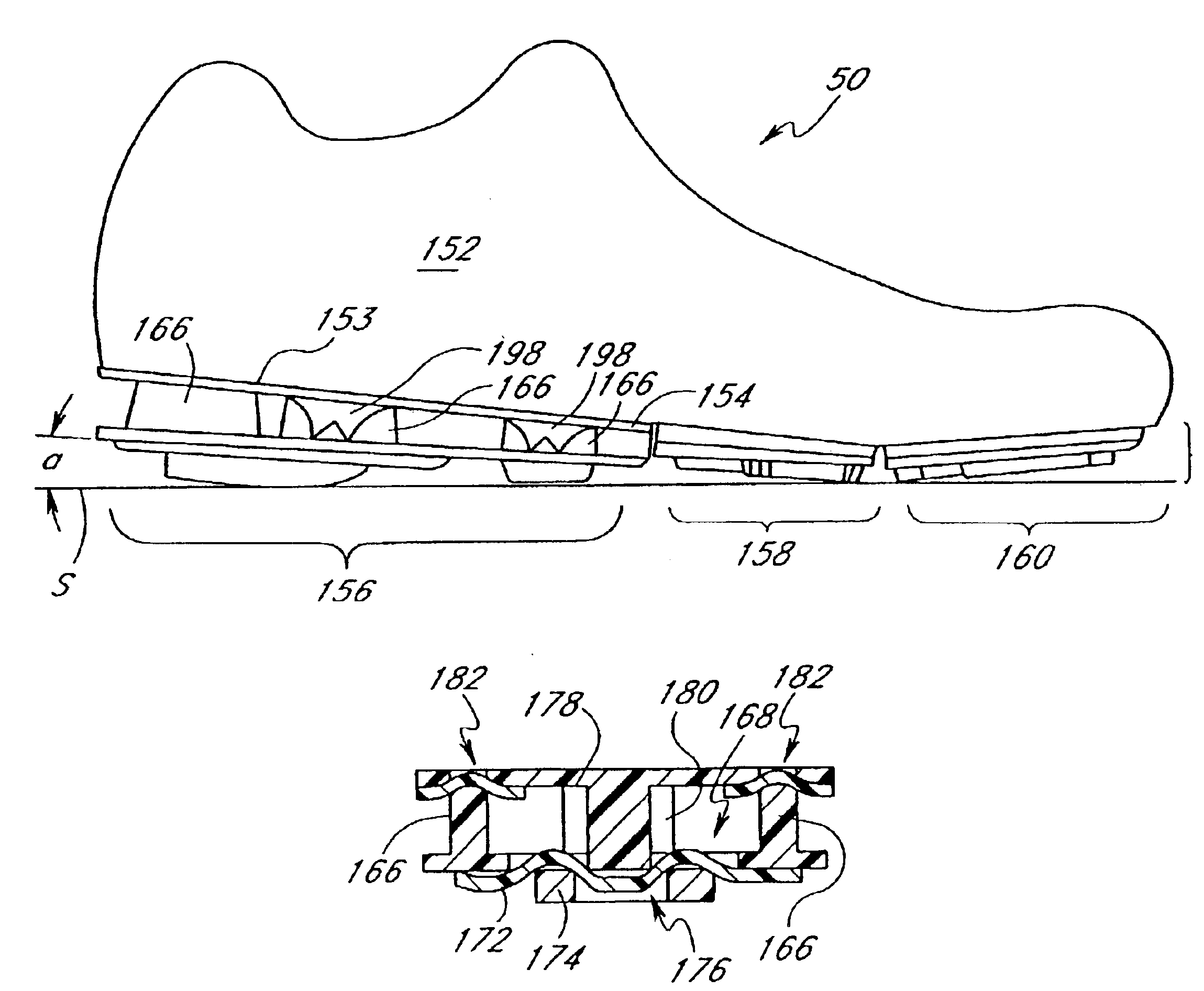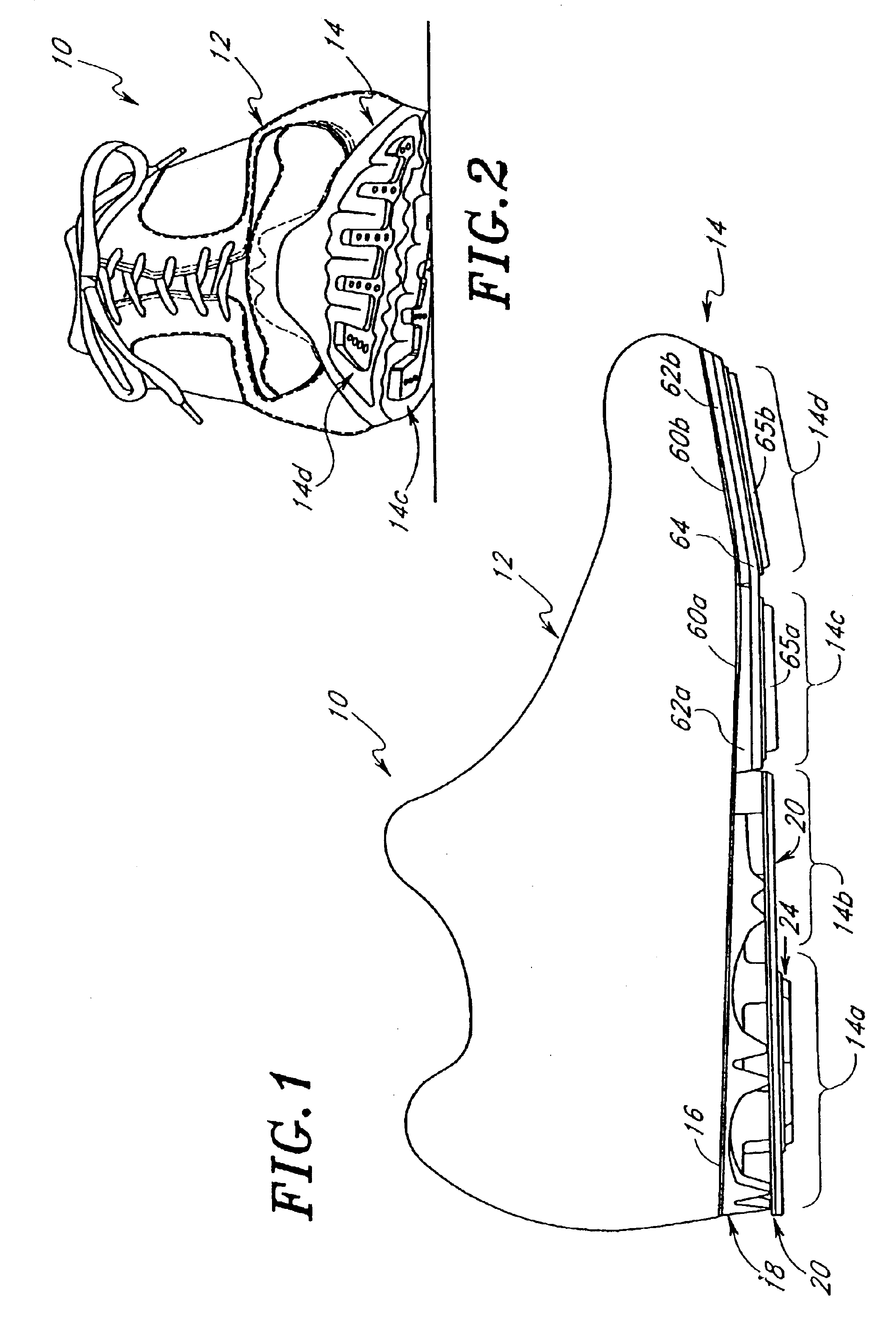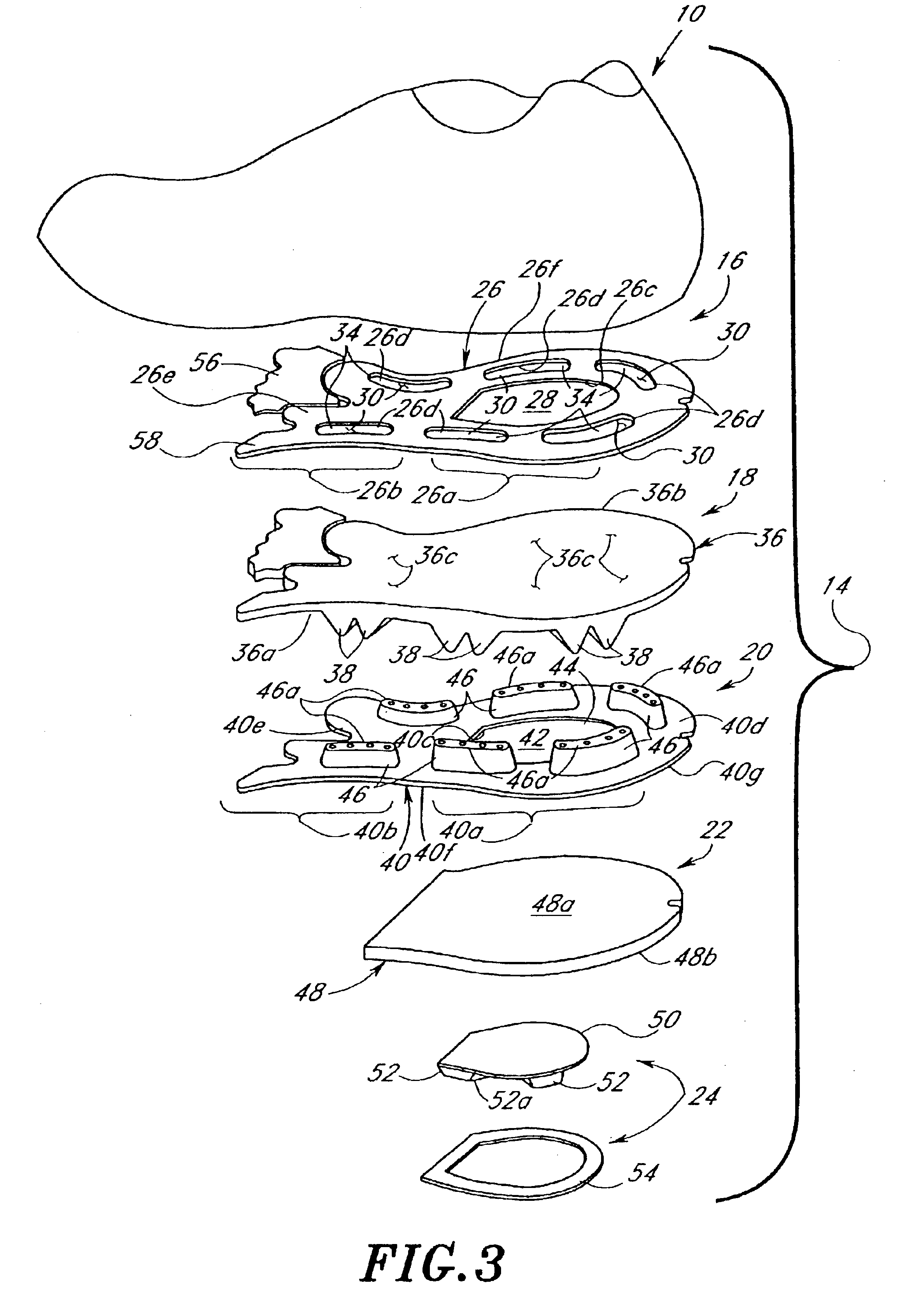Sole construction for energy storage and rebound
- Summary
- Abstract
- Description
- Claims
- Application Information
AI Technical Summary
Benefits of technology
Problems solved by technology
Method used
Image
Examples
first exemplary embodiment
Referring to the drawings and particularly to FIGS. 1 and 2, there is illustrated a first exemplary embodiment of an article of athletic footwear for walking, running and / or jumping, being generally designated 10. The footwear 10 includes an upper 12 and a sole 14 having heel and midfoot regions 14A, 14B and metatarsal and toe regions 14C, 14D wherein are provided the structural features of the sole 14 constituting the present invention. The sole 14 incorporating the construction of the present invention improves the walking, running and jumping performance of a wearer of the footwear 10 by providing a combination of structural features which complements and augments, rather than resists, the natural flexing actions of the muscles of the foot to more efficiently utilize the muscular energy of the wearer.
Referring to FIGS. 1 and 3 to 8, the heel and midfoot regions 14A, 14B of the sole 14 basically includes the stacked combination of a footbed layer 16, an upper stretch layer 18, an ...
second exemplary embodiment
In a second exemplary embodiment, the present invention is directed to articles of footwear incorporating a sole either as an integral part thereof or as an insert wherein the sole is constructed so as to absorb, store and release energy during active use. Thus, it should be appreciated that the invention includes such a sole, whether alone, as an insert for an existing article of footwear or incorporated as an improvement into an article of footwear. In any event, the sole is adapted to be worn on the foot of a person while traversing along a support surface and is operative to store and release energy resulting from compressive forces between the person and the support surface.
With reference first to FIGS. 12-14, the second exemplary embodiment of the present invention is shown to illustrate its most simple construction. As may be seen in FIG. 1, an article of footwear in the form of an athletic shoe 110 has an upper 112 and a sole 114. Sole 114 includes a heel portion 16 that is ...
third exemplary embodiment
The simple structure shown in FIGS. 12-14 can be expanded to make a highly active sole, such as that shown in the third exemplary embodiment of the FIGS. 15-22. With reference to FIG. 15, it may be seen that an article of footwear in the form of an athletic shoe 150 has an upper 152 and a sole 154 with sole 154 being constructed according to the third exemplary embodiment of the present invention. Sole 154 includes a heel portion 156, a metatarsal portion 158 and a toe portion 160, all described below in greater detail. Thus, when reference is made to a “sole” it may be just one of these portions, a group of portions or a piece that underlies the entire foot or a portion thereof.
Turning first, then, to heel portion 156, the structure of the same may best be shown with reference to FIGS. 17-19. In these figures, it may be seen that heel portion 156 includes a first profile 162 formed by an annular heel plate 164 that has a plurality of spaced apart auxiliary actuator elements 166 pos...
PUM
 Login to View More
Login to View More Abstract
Description
Claims
Application Information
 Login to View More
Login to View More - R&D
- Intellectual Property
- Life Sciences
- Materials
- Tech Scout
- Unparalleled Data Quality
- Higher Quality Content
- 60% Fewer Hallucinations
Browse by: Latest US Patents, China's latest patents, Technical Efficacy Thesaurus, Application Domain, Technology Topic, Popular Technical Reports.
© 2025 PatSnap. All rights reserved.Legal|Privacy policy|Modern Slavery Act Transparency Statement|Sitemap|About US| Contact US: help@patsnap.com



